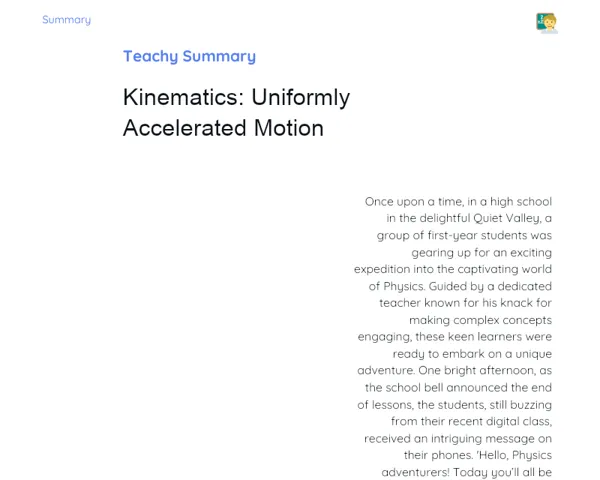Summary Tradisional | Waves: Vibration in Sound Tubes
Contextualization
Sound tubes play a vital role in producing sound in many musical instruments like flutes, organs, and saxophones. These tubes allow air to flow through them, and the vibration of the air inside generates sound waves that produce various frequencies and musical notes. The vibration within sound tubes occurs in an organized way, creating patterns known as standing waves, which are key to understanding musical acoustics.
There are primarily two types of sound tubes: open and closed. Open tubes have both ends exposed to air, while closed tubes have one end blocked. This structural distinction significantly influences the formation of standing waves in the tubes, resulting in different vibration patterns and, hence, varying sounds. Grasping this difference is essential for practical applications in areas like instrument making and noise management.
To Remember!
Sound Tubes
Sound tubes are systems that enable air to flow and generate sound waves through vibrations. These tubes are integral to several musical instruments like flutes, organs, and saxophones. The air's vibration within these tubes gives rise to sound waves that, depending on various factors, can yield different frequencies and musical notes. The attributes of sound tubes, including the materials used and their length, directly determine the sound's characteristics produced.
Vibrations in sound tubes occur in a distinct manner, forming patterns known as standing waves. Standing waves occur when a wave reflects back on itself and interferes, creating specific points of maximum (antinodes) and minimum (nodes) amplitude. These vibration patterns are crucial for understanding musical acoustics and producing diverse tones and timbres in different instruments.
There are two main types of sound tubes: open and closed. Open tubes feature both ends open, while closed tubes have one end sealed. This structural contrast has a significant impact on how standing waves develop within the tubes, leading to varied vibration patterns and consequently different auditory outcomes. Recognizing these variations is essential for practical application in instrument design and noise control solutions.
-
Sound tubes facilitate air passage and sound wave production through vibration.
-
Standing waves are formed by the reflection and interference of a wave with itself.
-
Sound tubes are categorized into open tubes (both ends open) and closed tubes (one end sealed).
Open and Closed Tubes
Sound tubes can be distinguished as open or closed based on their ends. Open tubes are entirely open, allowing air to flow freely. This arrangement results in standing waves with antinodes at both ends, where maximum vibration occurs. This pattern supports the creation of a complete harmonic series, which includes all integral multiples of the fundamental frequency.
In contrast, closed tubes have one end sealed, preventing air from escaping that end. The standing wave formed in this case has a node at the closed end and an antinode at the open end. Consequently, only odd harmonics are generated since the vibration pattern is limited by this configuration. Therefore, closed tubes yield a unique harmonic series and produce sounds distinctly different from open tubes.
The structural difference between open and closed tubes significantly impacts sound production. For instance, instruments like flutes and saxophones utilize open tubes to create a full range of harmonics, while closed tube instruments like clarinets generate particular sounds. Understanding these distinctions is crucial for both the design and usage of musical instruments, as well as in practical applications like noise control systems.
-
Open tubes allow airflow and form standing waves with antinodes at both ends.
-
Closed tubes have one end sealed, forming standing waves with a node at the closed end and an antinode at the open end.
-
Open tubes produce a full harmonic series, while closed tubes produce only odd harmonics.
Standing Waves
Standing waves are specific vibration patterns that manifest when a wave reflects and interferes with itself. Within sound tubes, these waves arise from the movement of air, resulting in points of maximum amplitude (antinodes) and minimum amplitude (nodes). The formation of standing waves is crucial for creating sound in musical instruments, as it dictates the frequencies and harmonics that can be emitted.
In open tubes, standing waves establish antinodes at both ends, enabling a pattern with maximum amplitude at the extremes. This configuration allows for multiple harmonics, producing a complete frequency range. On the other hand, in closed tubes, a node is present at the sealed end and an antinode at the open end, limiting the vibration patterns and permitting only odd harmonics to develop. The variation in standing wave formation directly affects the sound quality from each type of tube.
Comprehending standing waves is vital for several practical applications, including the design of musical instruments and noise control systems. Understanding how standing waves develop and behave within tubes allows for the optimization of sound production and control over desired acoustic characteristics. Additionally, the study of standing waves is foundational for many fields in physics and engineering.
-
Standing waves are formed by the reflection and interference of a wave with itself.
-
In open tubes, standing waves have antinodes at both ends, allowing the formation of multiple harmonics.
-
In closed tubes, a node appears at the closed end while an antinode appears at the open end, restricting vibration patterns to only odd harmonics.
Harmonics and Wavelength
Harmonics refer to frequencies that are integral multiples of a wave's fundamental frequency. In sound tubes, harmonics arise from standing wave formations and are influenced by the tube's length and whether the ends are open or closed. Understanding the connection between harmonics and wavelength is fundamental for grasping how various musical notes are created in wind instruments.
For open tubes, the wavelength of harmonics is determined by the formula λ = 2L/n, where λ represents the wavelength, L is the length of the tube, and n is the harmonic number. This indicates that all integral multiples of the fundamental frequency can be formed, resulting in a complete harmonic series. In the case of closed tubes, a different formula applies: λ = 4L/(2n-1). Here, only odd harmonics are produced due to the sealed end limiting available vibration patterns.
Grasping the relationship between harmonics and wavelength is crucial for designing musical instruments and other acoustic applications. It helps in adjusting tube dimensions to achieve desired frequencies and optimize sound performance. Moreover, studying harmonics and wavelengths is a fundamental aspect of wave physics and musical acoustics.
-
Harmonics are frequencies that are integral multiples of the fundamental frequency of a wave.
-
For open tubes, the harmonic wavelength follows the formula λ = 2L/n, leading to a complete harmonic series formation.
-
For closed tubes, the relationship is expressed as λ = 4L/(2n-1), which allows only for the formation of odd harmonics.
Key Terms
-
Sound Tubes: Structures that permit the passage of air and produce sound waves when vibrating.
-
Open Tubes: Sound tubes with both ends open.
-
Closed Tubes: Sound tubes with one end sealed.
-
Standing Waves: Vibration patterns formed when a wave reflects and interferes with itself.
-
Harmonics: Frequencies that are integral multiples of the fundamental frequency of a wave.
-
Wavelength: The distance between two consecutive points in phase in a wave.
-
Antinode: Point of maximum amplitude in a standing wave.
-
Node: Point of minimum amplitude in a standing wave.
Important Conclusions
In this lesson, we examined the significance of sound tubes in sound production and highlighted the differences between open and closed tubes. We understood how these tubes produce standing waves and their importance in the context of musical acoustics. We noted that while open tubes foster a complete harmonic series, closed tubes limit the vibration patterns to odd harmonics.
We delved into the connection between harmonics and wavelength, using specific mathematical formulas to determine the wavelengths of harmonics across different tube types. This understanding is essential for instrument design and construction, as well as for practical applications such as noise control systems. Demonstrating how theoretical concepts can be applied to practical problems showcased the real-world relevance of the knowledge gained.
The importance of this subject extends beyond physics classes, as comprehending vibrations in sound tubes is vital for various fields, including music, acoustic engineering, and product design. We encourage students to further explore this area, dive deeper into the concepts, and experiment with musical instruments to connect theoretical knowledge with practice.
Study Tips
-
Review the mathematical formulas discussed in class and practice calculating wavelengths and harmonics in sound tubes.
-
Research and watch videos on the construction and functioning of musical instruments using sound tubes like flutes and organs to visualize the class concepts.
-
Experiment with creating your own sound tubes using simple materials like PVC pipes to witness the formation of standing waves and the production of different sounds firsthand.



